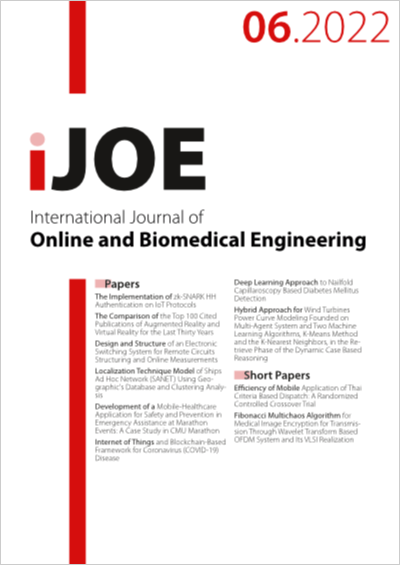Fibonacci Multichaos Algorithm for Medical Image Encryption for Transmission Through Wavelet Transform Based OFDM System and Its VLSI Realization
DOI:
https://doi.org/10.3991/ijoe.v18i06.30281Keywords:
Fibonacci transform, Chaos, cryptography, VLSIAbstract
At every stage of the digital media transfer, storage, and retrieval process, sensitive images are rendered indecipherable through the use of image encryption. Germany's hospitals have relied on image encryption for years to keep patient data from being accessed by the IT personnel, stolen or left recorded into the network system that could be compromised remotely.
In order to encrypt a file manually, the process is extremely time- and effort-consuming. Automating this process while retaining high security is desirable. In this research, we present an approach for encrypting medical images that combines scientific computing with cryptography.
This algorithm uses the Fibonacci Multi Chaos Algorithm to encrypt medical images, making them more secure. Distinct wavelet transform orthogonal frequency division multiplexing is used to convey picture data in this work, which is a reliable and secure method.
Downloads
Published
How to Cite
Issue
Section
License
Copyright (c) 2022 Gangadhar Ch, Habibulla, Mahalakshmi T, Praveena D, SriLakshmi Ch, Phani Rama Krishna K

This work is licensed under a Creative Commons Attribution 4.0 International License.


